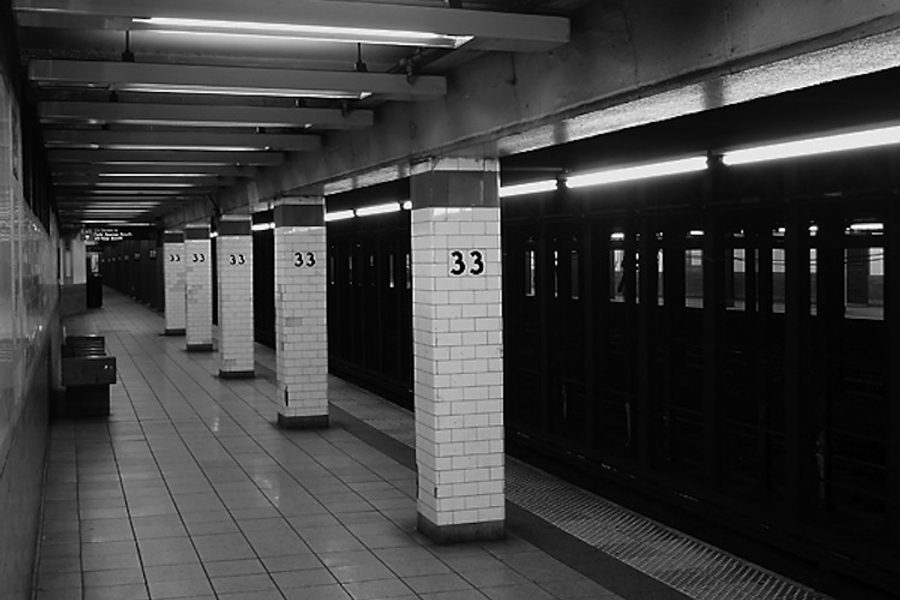A Picture Worth Far More Than 1,000 Words
How the New York Post subway photo turns the lens on us.
David Sirota

To publish or not to publish? That was the debate in media circles this week after the New York Post printed a horrifying photo of a man named Ki Suk Han who had been pushed onto the subway tracks and was trying to avoid getting hit by a train. In its typical bombastic fashion, Rupert Murdoch’s tabloid offered up the image as cheap, decontextualized news pornography for infotainment junkies. “Doomed” blared the headline in giant type, with the macabre subhead telling readers, “This man is about to die.”
The Post’s singular goal, of course, was to attract eyeballs. To do that, the paper’s editors opted to tap into the same impulse that prompts drivers to gawk at grisly highway accidents. In response, critics, like my Salon colleague Mary Elizabeth Williams, excoriated the paper for engaging in a “shamelessly tasteless stunt” that was all about exploitation.
“This wasn’t like the historic front page stories of the My Lai massacre, or of crowds lynching men in the South, or of Kent State: photographs of dead bodies that arrived with a demand for action and justice,” Williams wrote, summing up the pervasive criticism. “They were pictures that told a bigger story about a major news event … What does the Post have to say, aside from the fact that an apparently disturbed man pushed a commuter toward his death?”
Williams and other critics were right to slam the Post’s specific presentation of the image. However, many seemed to miss the true news value of the photograph itself. Looked at carefully, it is not merely a picture—it is a mirror.
Here is an image of an immigrant in the richest city of the richest nation trying—literally—to personify America’s up-from-the-bootstraps creed and pull himself to safety. And yet he was left to die in total solitude. As holiday music extolling community spirit echoes through every public space, not a single person came to his aid. Apparently, the only assistance he received was from a freelance photographer who flicked his flashbulb, allegedly to tell the train to stop. But those flashes weren’t necessarily altruistic—they were also helping the camera record everything for maximum photographic effect.
Considered through this prism, the image is clearly powerful—and quite newsworthy.
Looked at one way, it captures how so many immigrants are invisible to the larger population—unseen or ignored in what should be the most attention-grabbing of moments.
Looked at another way, the photograph documents desensitization—Americans (and city dwellers in particular) are often so used to witnessing tragedy that many don’t even react to it anymore.
Looked at yet another way, it seems to illustrate which ideology has won too many hearts and minds. In a country that oxymoronically touts both its generosity and its self-focused hyper-individualism, the latter ethos too often wins out, to the point where a guy thrown to the bottom of a subway channel can’t even get anyone to offer a hand up.
But maybe the most harrowing message of the image is the one about voyeurism. Echoing our obsession with commodifying images and packaging them to “go viral,” the snapshot personifies a culture that tells us to take pictures first and help later—if at all.
That any newspaper—even a tabloid—could behold such a consequential image and nonetheless use cheap headlines to obscure its core meaning only underscores the supremacy of such voyeurism.
Ultimately, then, the most profound visual to come from Han’s death may not be the photograph itself—but the image of how it was presented on the cover of the New York Post. In that chilling context, it says far more than 1,000 words about what truly ails our society.

I hope you found this article important. Before you leave, I want to ask you to consider supporting our work with a donation. In These Times needs readers like you to help sustain our mission. We don’t depend on—or want—corporate advertising or deep-pocketed billionaires to fund our journalism. We’re supported by you, the reader, so we can focus on covering the issues that matter most to the progressive movement without fear or compromise.
Our work isn’t hidden behind a paywall because of people like you who support our journalism. We want to keep it that way. If you value the work we do and the movements we cover, please consider donating to In These Times.







